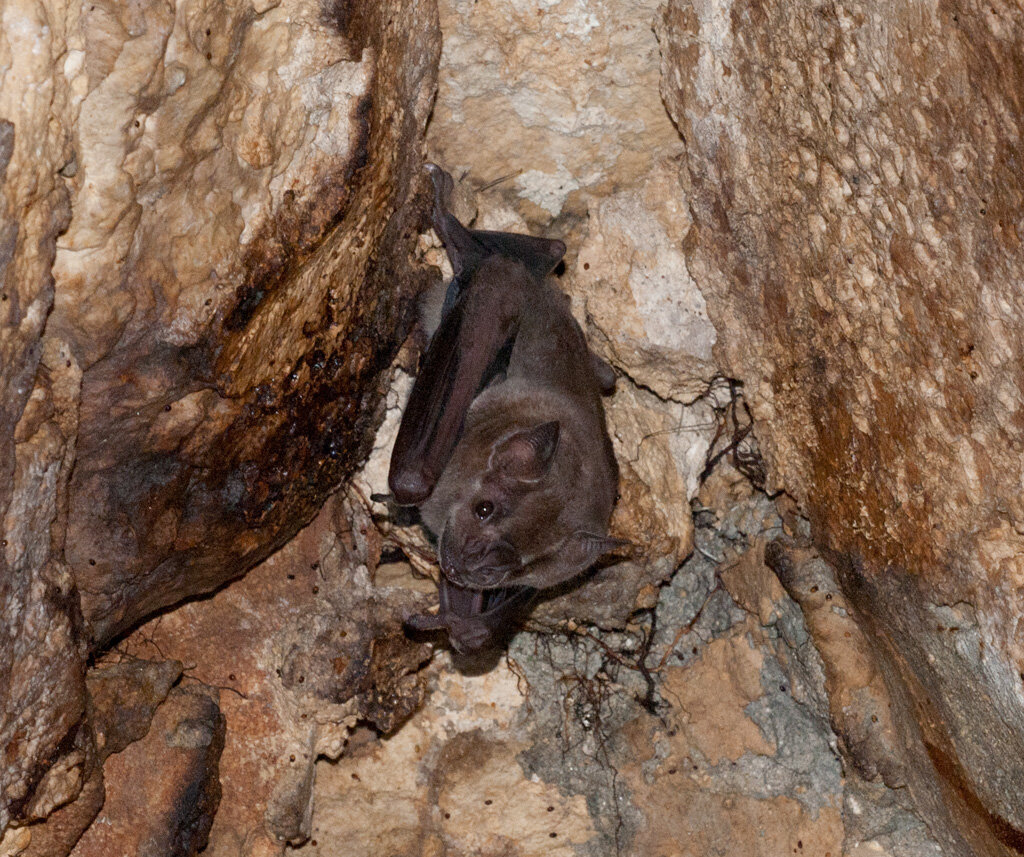Jamaican Fruit-Eating Bat
Jamaican Fruit-Eating Bat / Sergey Yeliseev
Scientific Name: Artibeus jamaicensis
Other Common Names: Mexican Fruit Bat
Range: Mexico, Central & South America, Caribbean
Habitat: Forests, Caves, Tree Hollows
Litter Size: 1
Conservation Status: Least Concern
Avg. Lifespan (wild): 9-10 years
Description
The Jamaican Fruit Eating Bat is a leaf nosed bat native to the island of Jamaica. Its hair is primarily dark brown to black in colour with white roots and paler hair on the ventral (front) side of its body. It has a distinctive white markings on its face above and below each eye. It also has large canine teeth to aid in biting hard fruit
Adult Jamaican Fruit Bats weigh between 40-60 g and have and average length of 75 - 80 mm with an average wingspan of 48 -67 mm. The Jamaican Fruit-Eating Bat is known to live 9 - 10 years in the wild.
Range
The Jamaican Fruit Eating Bat can be found in the Central and Southern regions of Mexico, Central America, Northern South America and the Caribbean.
Habitat
The Jamaican Fruit-Eating Bat is mostly found in wet forests but can also be found in dry forests.
It generally roosts in caves and tree hollows but is known to create its own roost making a tent-like structure out of palm leaves.
These roosts provide the bats with an area to rest and shelter while protecting it from harsh weather conditions like rain as well as predators.
Diet
Its diet primarily consists of brightly coloured fruits including figs, papayas and mangoes. It also feeds on pollen, nectar, flowers and leaves.
After finding fruit, the Jamaican Fruit Bat flys back to a feeding roost before consuming it and discarding the seeds in this new location. It typically digests its food in 15-20 minutes.
Breeding
The Jamaican Fruit Bat is polygynous with 1 - 2 males defending harems of 4-18 females. Females breed once or twice a year, in late March/early April and then late July/early August giving to birth to one pup. They have an average gestation period of 4 months. After giving birth for two consecutive breeding cycles the female’s uterus goes dormant for two and a half months before continuing reproduction.
Pups are weaned off their mother’s milk after around 15 days and take 31 - 51 days before they can fly. Until then the pups are carried by their mothers while they forage for food.
Conservation Status
Least Concern
